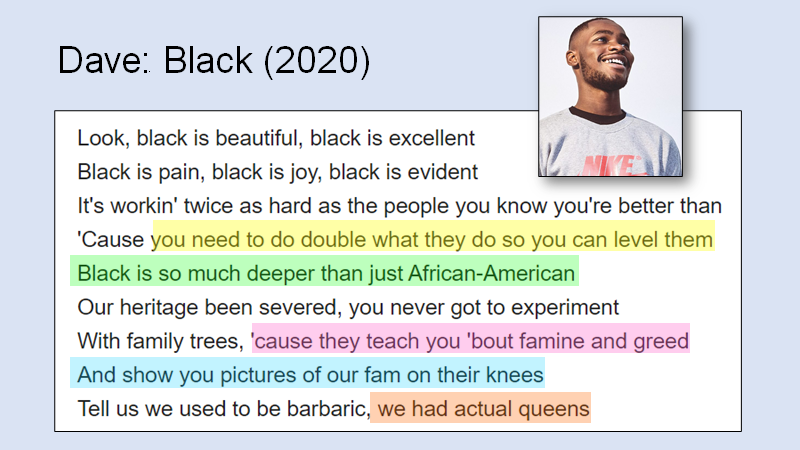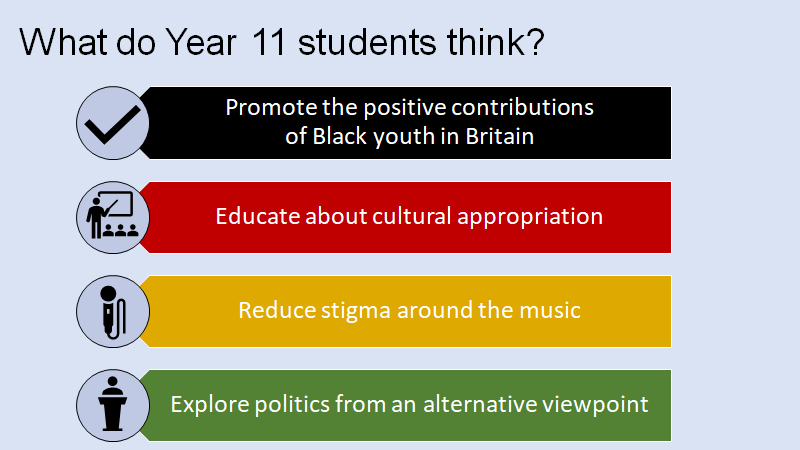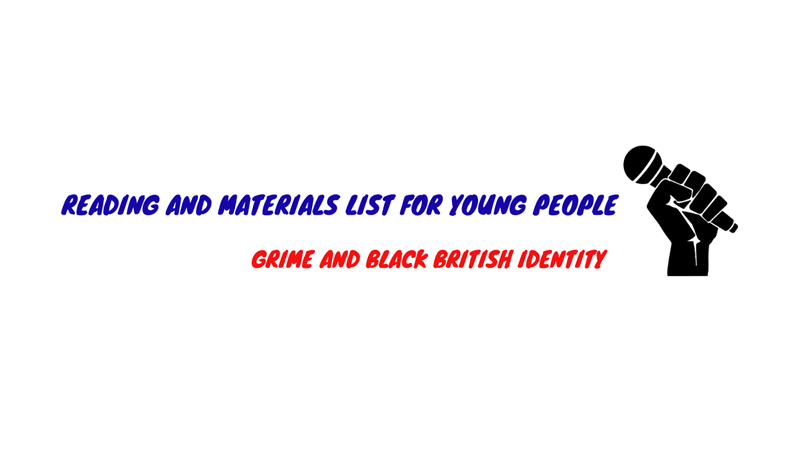Grime is a genre of Black British music often maligned as a musical genre for ‘urban youth’. From its early 2000s inception, Grime fused aspects of British and global music genres to represent a melting pot of sounds, language, style, culture and experience. For many young people across the United Kingdom today, Grime is a culture and a social movement that represents a voice of hope and honesty.
Grime acts as a catalyst for change, sparking healthy debate and often mobilising young people around social issues most pertinent to their lives today. In this sense, Grime has the ability to transcend age, gender, sexuality, race and political class, providing a much needed social commentary on highly charged topics.
More recently, Grime has moved from the periphery of British society to become one of its biggest cultural exports. By championing British culture and identity, Grime engages new audiences, enriching debates on social issues in, around and beyond music including racism, classism, austerity measures, gentrification, housing and voting.
The Grime and Black British identity reading and materials list can be used to guide educators to incorporate Grime across the curriculum and more specifically, Black British identity in schemes of work. However, the main aim is to empower students themselves to explore and develop autonomy in viewing current affairs through a lens that they can relate to.
During Black History Month last year, students at Cedar Mount Academy watched Dave’s live 2020 BRIT Awards performance of ‘Black’ and discussed an excerpt from the lyrics. Students drew out themes such as education and employment, race and racism, media and stereotypes and colonial history:

When asked whether they think Grime should be included in the curriculum, students explained that it could support them to:

Geography educators can link Grime to key concepts such as space, place, scale, and identity across Key Stages as follows:
GEOGRAPHY CURRICULUM
Geography: Students can develop an understanding of the world they live in and the interrelatedness of people and the environment. Grime is a contemporary and locally situated movement rooted in geopolitics.
- Key Stage 3: local areas, migration, geography of the UK, human and physical landscapes, urbanisation
- Key Stage 4: migration, urban issues and challenges, development and globalisation, compassionate geographies
- Key Stage 5: changing place, migration, global systems and governance, localities, meaning and representations
Educators can celebrate Grime across the curriculum, including but not exclusive to subjects and topics such as:
WIDER CURRICULUM
English: Students can analyse lyrics of Grime music as they would a poem, comparing the similarities between techniques and imagery used. Grime embraces diversity in dialect, delivery, accent and colloquial language.
History: Students can use Grime as a source of oral history and a method of source analysis to develop analytical skills. Grime musicians make reference to lived experience linked to social, political, and historical events.
Music: Students should perform, listen to, review and evaluate a range of music genres. Grime presents a unique and relatable opportunity given its range of influences and rapid BPM (140).
PSHE & Citizenship: Students should access relevant and up to date social commentary on a range of issues aligned with British values and social, emotional, mental health (SEMH). Grime engages younger audiences in current affairs at local, national and global levels.
What we share here, and in the resource are not exhaustive lists but indicative of our interests and experience. We welcome educators to share their own and students' efforts to embrace and celebrate Grime and Black British identity across the curriculum.
#GrimeInTheCurriculum

